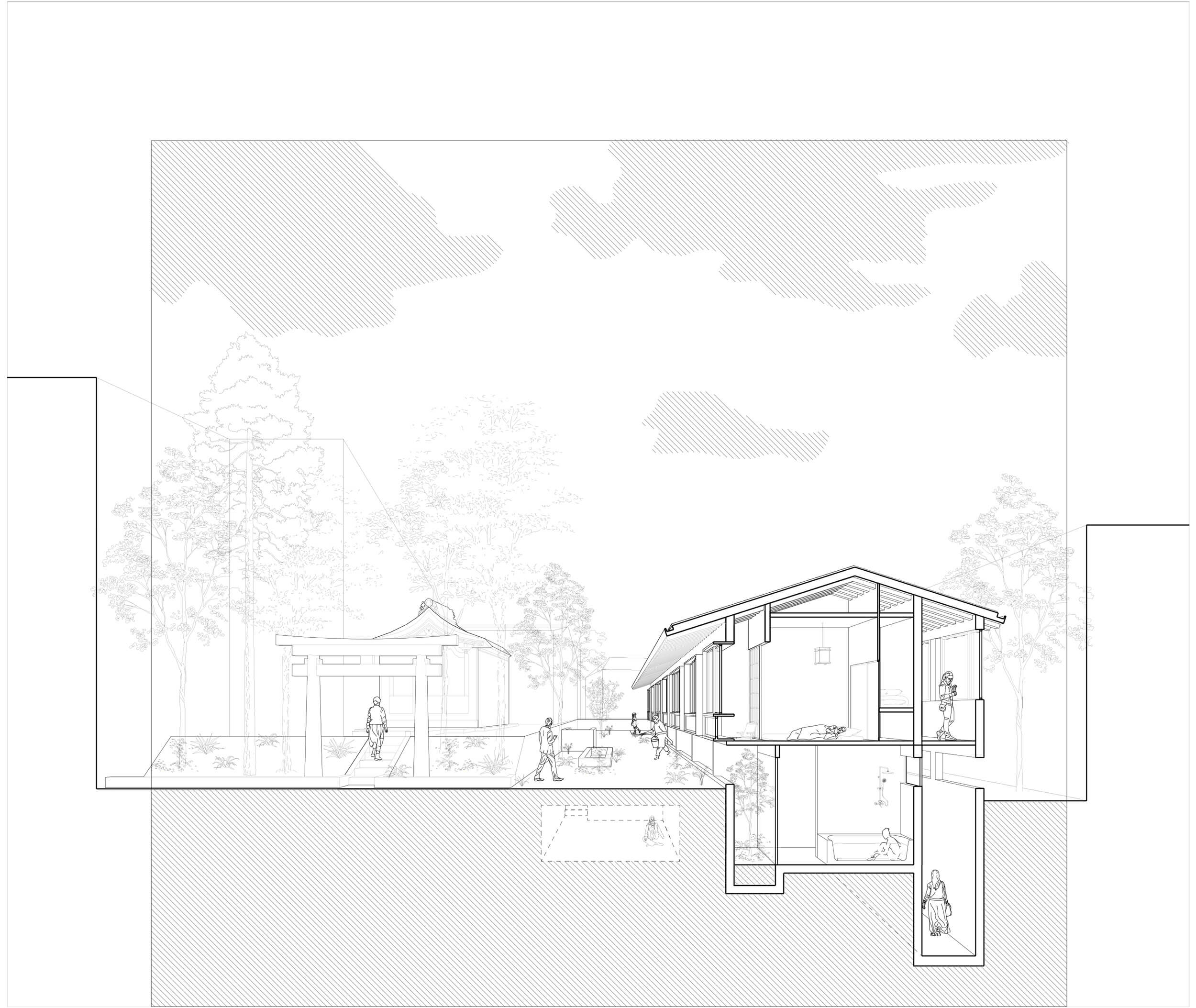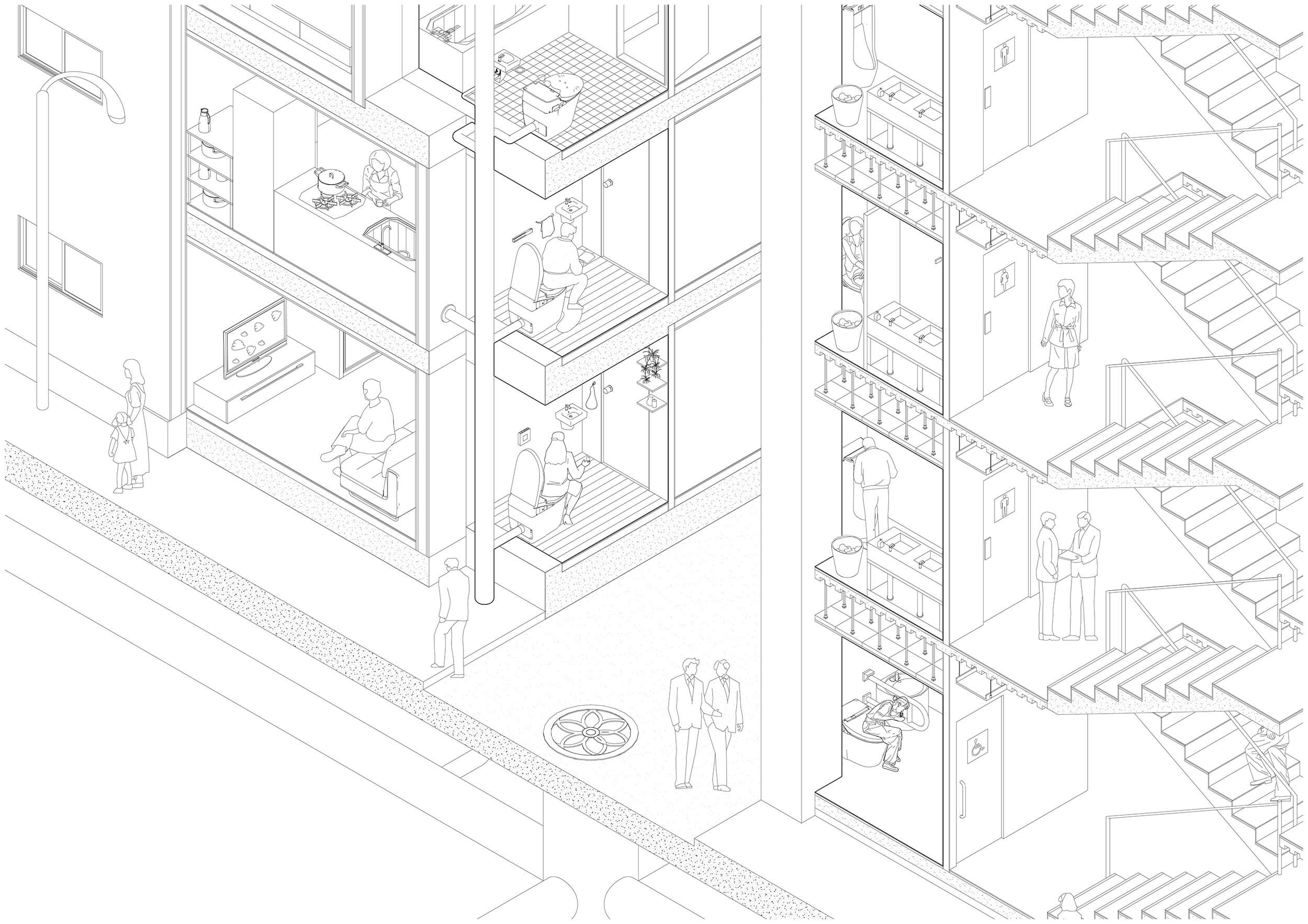PILGRIMS HOSTEL
The design proposal is on the site next to the shrine – connected on the same level, and with plenty of vegetation. We search about the activities of pilgrims, and offer a timeline of activities: the basic ones (sleeping, bath- ing), and some that connect with the spiritual experience (dining, workshops, tea ceremony, meditation/worship). The process started with dispersing the activities on the site to create the design, and connect them in two areas public and private, linked with the semi-public outdoor space.
The sequences were part of the pilgrimage narrative – spiritual journey within the site. From arriving, along the long ramp corridor, to come to the point which is opposite of the public entrance to the temple. And climbing few steps, to reach a garden semi-private, disconnected from the street with the terrace from the hostel. The garden offers three paths – meditation room under ground, with a sky opening that views the shrine. Continuing to the terrace and the reception of the hostel, or continuing to the shrine. After the reception, few steps are climbed to provide accommo- dating space on the same level as the shrine.
Student: Irena Atkovska
Toilet
The development of the toilet and the treatment of excrement in Japan are closely linked to a growing mechanization of the lavatory as a device and its progressive shift vis-à-vis the house from outdoors to indoors. In the Edo and early Meji Periods toilets were located at the edge of or outside the house. Conceived as a squat-latrine system, made out of wood, it was adapted for the easy collection of the excrement, which was then used as fertilizer. Between the World Wars, new systems, new materials, and even new toilets (for instance toilet bowls) were slowly introduced, while the collection of sewage became more and more mechanized, with basket collection being successively replaced by trucks, then mobile vacuum-extraction units, and later still by a Western type of sewage system with pipes. In recent years the predominant European-based device has become hyper-Japanized, highly automated (including washing, drying, background noise, cleaning, disinfecting, etc.), and even described and praised as something kawaii (cute, adorable) in the public narrative.
Balcony
The balcony extends the private realm to the outside and at the same time introduces aspects of the public realm into the intimacy of the apartment. This ambiguity is reflected, and even amplified, by the behavior of the inhabitants, who either appropriate the balcony as a space of inhabitation or, on the contrary, use it as a public stage. Similarly a privately owned place, its use is regulated in Japan by provisions, determining the possible activities that can take place or not on it. Triggered by the balcony’s status as a threshold space, users can easily exploit this ambiguity for transgressions, simultaneously revealing the ambivalent spatial status of this building element.

